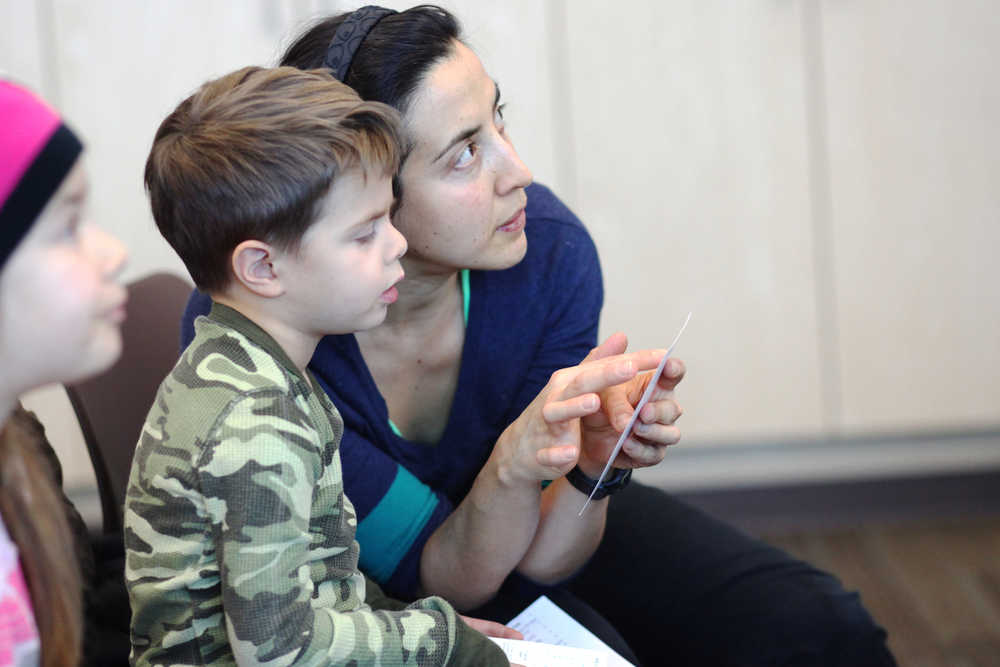River City Academy sophomore Maria Maes is one of three students in the Kenai Peninsula School District who are blind or visually impaired. Although she said that most of her sighted classmates interact with her confidently, the social environment outside of school is different.
“Blindness is such a low-incidence thing that I don’t think everybody encounters a blind person,” Maes said. “For me, it’s something I live with, but for most other people around me, it’s not a part of their life. So I don’t think awareness is very good because they just don’t know.”
Spreading that awareness was the goal of Celebraille, an event Maes participated in Friday at the Soldotna Public Library. About 20 individuals and families gathered for Celebraille — a name combining “celebration” with Braille, the tactile script read by the blind.
“At the end of the event, you’ll feel very comfortable talking about blindness,” said Jordana Engebretsen, the Kenai Peninsula School District’s teacher for the visually impaired. Engebretsen, who is blind herself, hosted the event along with Maes and Malachi Hansen, another blind student, and teachers Violetta Strait and Granger Nyboer.
Nyboer, a Kenai Peninsula School District special education teacher, addressed etiquette for sighted people to use in interactions with the blind. He said one common mistake is failing to make eye contact or looking away while speaking to a blind person, assuming they won’t be able to notice — in fact, a blind person can tell a speaker has turned away by a softening in their voice.
Granger said another faux pas sighted people commit is self-consciously avoiding vision-related words out of exaggerated concern for a blind conversation partner’s feelings. Maes gave the example of a well-meaning acquaintance who asked her “have you listened to this movie?”
“You don’t have to walk on eggshells as you’re talking to someone with visual impairment,” Nyboer said.
In addition to speeches and question-and-answer sessions, Celebraille also included games and interactive events.
Engebretsen lead the audience in a lesson on Braille script, challenging them to read Braille sentences — visually, since Engebretsen said finger-reading Braille can be a difficult skill to learn without training. Engebretsen also demonstrated how she chooses her outfits using a color-sensing device, and challenged an audience volunteer to use the device to select a color-coordinated outfit while blind-folded. Another blindfold challenge had two volunteers navigating through an obstacle course of chairs and benches using white canes.
Engebretsen said Celebraille was similar to other events she put on throughout October, which was recognized as National Blindness Awareness month. She hopes to make Celebraille an annual happening.
As for Maes, she said that outside of awareness events such as Celebraille, the subject of blindness doesn’t occupy much of her attention or social time.
“I wouldn’t be sure how to start (talking about blindness),” Maes said, when asked if she attempts to educate people on the issue. “It’s probably the most boring subject that comes up in my life. Aside from math and stuff. Actually math is more interesting than this. But it’s important. People need to know so they don’t treat us like infants.”

